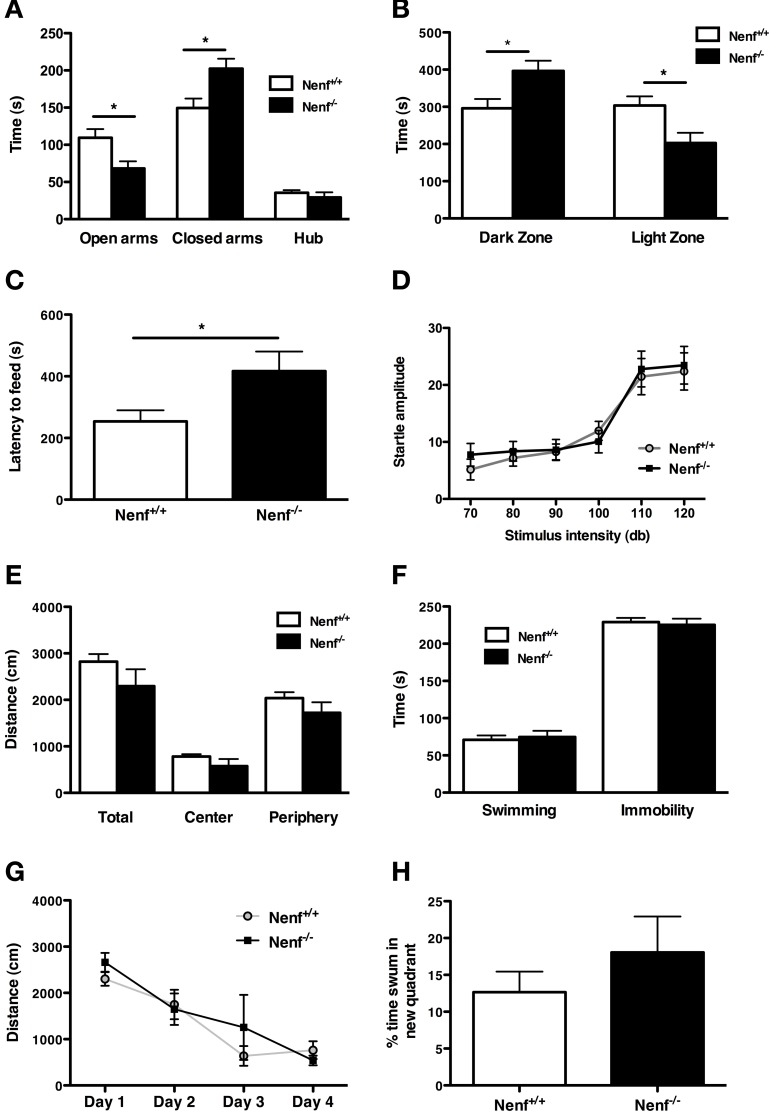Figure 1.
Neudesin-null mice (Nenf−/−) display an anxious-like behavior in contextual paradigms. (A) Nenf−/− mice spend significantly less time exploring the open arms of the EPM than control mice (Nenf+/+). (B) The LDB test shows that Nenf−/− mice spend more time in the dark zone than in the light zone. (C) Also, in the NSF Nenf−/− mice take longer to feed in the novel environment when compared with Nenf+/+. (D) The AS test shows that Nenf−/− mice have a similar startle response to higher intensities of sound not reflecting an anxious like behavior in this anxiety dimension. (E) In the OF no differences were observed between Nenf−/− and Nenf+/+ in the total distance traveled in the arena. (F) Performance in the FST, which assessed learned helplessness behavior does not reveal differences between the two groups. (G) Cognition, as assessed using the MWM test, is identical between groups, as revealed by the time taken to learn the platform position. (H) The % of distance swum in the new quadrant in the reversal trials of the MWM test did not reveal any differences between groups. Data are presented as mean ± SEM. *p < 0.05. OA, open arms; CA, closed arms; H, hub; DZ, dark zone; LZ, light zone?

